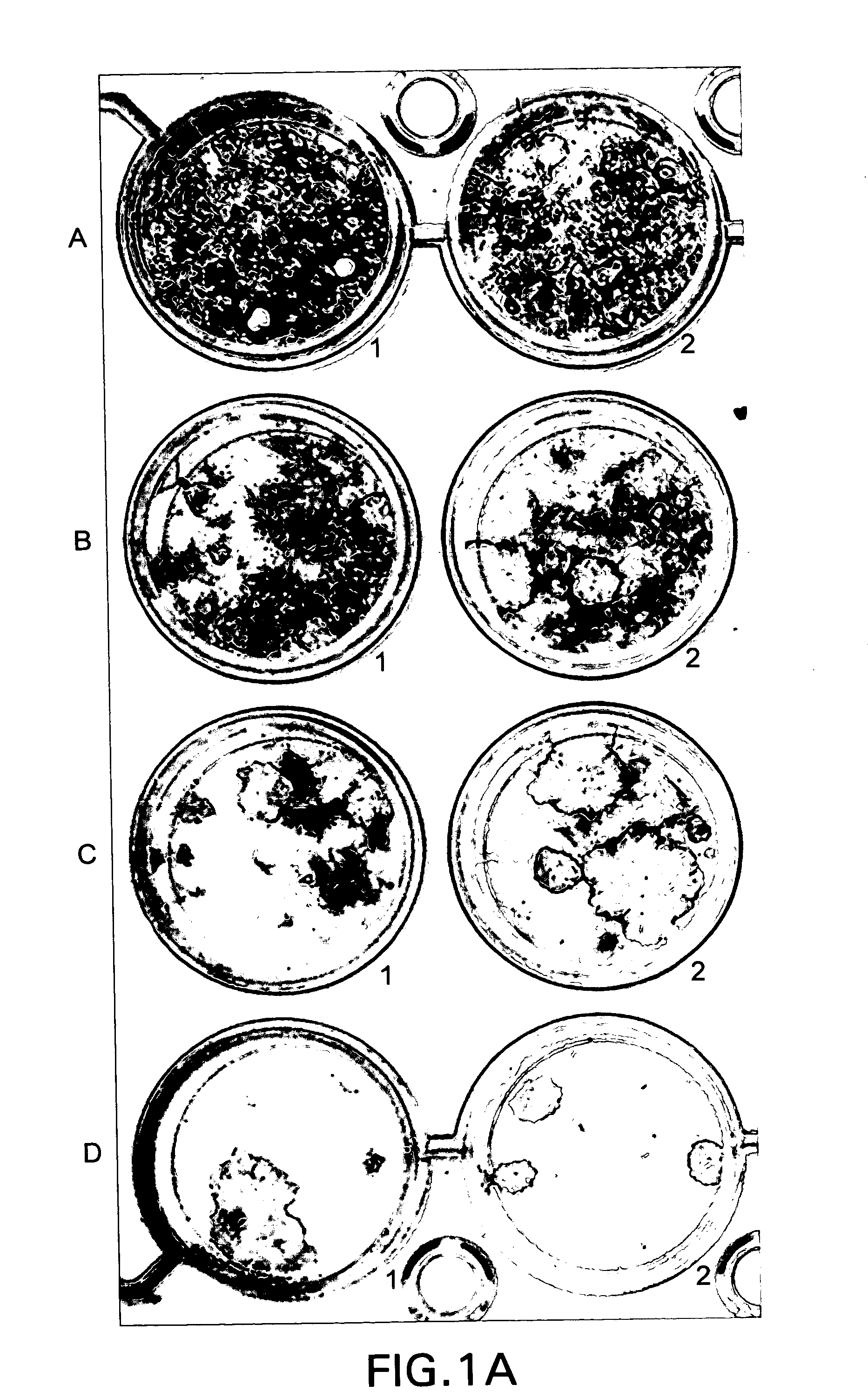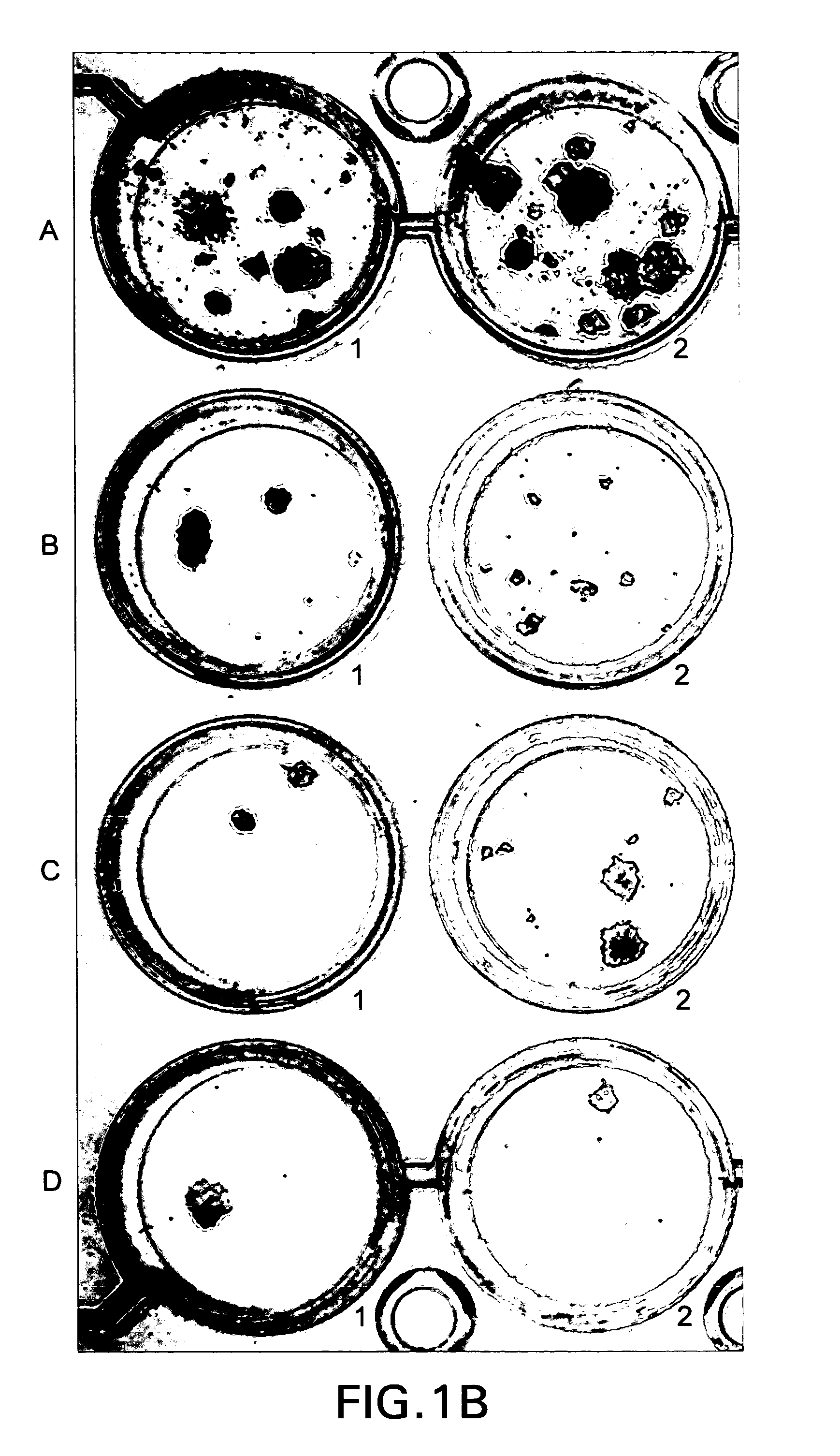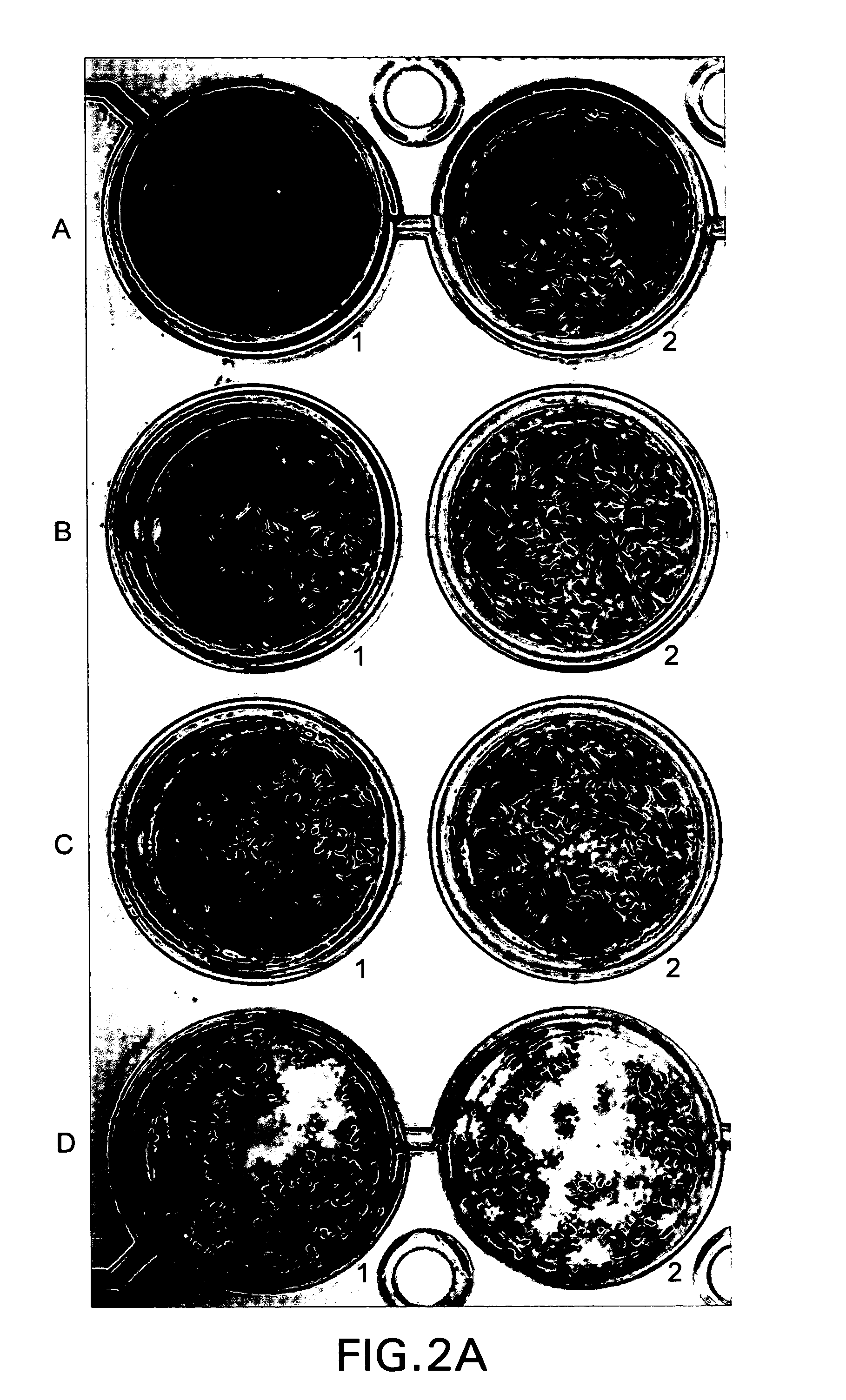Method for selectively culturing epithelial or carcinoma cells
a technology of selective culturing, which is applied in the field of culturing epithelial or carcinoma cells, can solve the problems of limited success in propagating carcinoma cells purified in methyl cellulose and difficult to develop a method that achieves both goals, and achieves the effect of inhibiting the growth of fibroblast cells
- Summary
- Abstract
- Description
- Claims
- Application Information
AI Technical Summary
Benefits of technology
Problems solved by technology
Method used
Image
Examples
example 1
Preparation of Media Additives
Preparation of Working Solution of Epidermal Growth Factor and Insulin
Materials
[0027] Insulin—Product # 2767 from Sigma (St. Louis, Mo.), 100 mg / vial. Store at −20° C. upon receipt.
[0028] Epidermal Growth Factor (EGF)—Product # E9964 from Sigma (St. Louis, Mo.), 200 micrograms. Store at −20° C. upon receipt.
[0029] 12×75 sterile snap cap tubes, Falcon # 352032 from Fisher Scientific (Houston, Tex.).
[0030] Sterile distilled water.
Procedure
[0031] Add 50 ml sterile distilled water to vial of insulin.
[0032] Add 20 ml sterile distilled water to vial of EGF.
[0033] Aliquot 1.0 ml of insulin and 0.25 ml of EGF into each 12×75 snap cap tube.
[0034] Store at −70° C.
[0035] Expiration date: 3 months after reconstitution.
Preparation of Working Dilution of Transferrin Materials
[0036] Transferrin—Product # T 0665, Sigma (St. Louis, Mo.), 1 gram; store at 2-8° C. upon receipt.
[0037] 1× Hank's Balanced Salt Solution (HBSS), Product # H 8264, Sigma (St. ...
example 2
Preparation of Attachment Medium
Materials and Content
[0054] D-valine MEM—PromoCell (PromoCell; Heidelberg, Germany), 500 ml; store at 4° C.
[0055] L-glutamine (200 mM)—Product # G 7513, Sigma (St. Louis, Mo.), 5 ml, store at −20° C. upon receipt
[0056] HEPES (1M)—Product # H 0887, Sigma, 5 ml; store at 2-8° C. upon receipt
[0057] Insulin and EGF, 1.25 ml (see above)
[0058] Transferrin, 2.0 ml (see above)
[0059] Hydrocortisone and estradiol, 1.20 ml (see above)
[0060] Gentamicin (10 mg / ml)—Product #G 1272, sigma, 2.5 ml; store at 2-8° C. upon receipt.
[0061] Cultrex Basement Membrane Extract—R&D Systems (Minneapolis, Minn.); store at −20° C. upon receipt.
Procedure
[0062] To 500 ml of D-valine MEM add 5 ml of L-glutamine (200 mM), 5 ml of HEPES (1M), 1.25 ml of insulin and EGF, 2.0 ml of transferrin, 1.20 ml of hydrocortisone and estradiol, 2.5 ml of gentamicin (10 mg / ml); store at 2-8° C.
[0063] Expiration date: 3 months after reconstitution.
[0064] To 2.5 ml of cultrex Basement...
example 3
Preparation of First Growth Medium
Materials
[0065] D-valine MEM—PromoCell (PromoCell; Heidelberg, Germany), 500 ml; store at 4° C.
[0066] Fetal bovine serum—Product # F6178, Sigma, 50 ml; store at −20° C. upon receipt
[0067] L-glutamine (200 mM)—Product # G 7513, Sigma (St. Louis, Mo.), 5 ml, store at −20° C. upon receipt
[0068] HEPES (1M)—Product # H 0887, Sigma, 5 ml; store at 2-8° C. upon receipt
[0069] Insulin and EGF, 1.25 ml (see above)
[0070] Transferrin, 2.0 ml (see above)
[0071] Hydrocortisone and estradiol, 1.20 ml (see above)
[0072] Gentamicin (10 mg / ml)—Product #G 1272, Sigma, 2.5 ml; store at 2-8° C. upon receipt
[0073] Methyl cellulose—Product #M 0512, Sigma (St. Louis, Mo.), 100 g. Store at room temperature upon receipt.
Procedure
[0074] Complete D-valine MEM:
[0075] To 500 ml of D-valine MEM add 50 ml of fetal bovine serum, 5 ml of L-glutamine (200 mM), 5 ml of HEPES (1M), 1.25 ml of insulin and EGF, 2.0 ml of transferrin, 1.20 ml of hydrocortisone and estradiol, ...
PUM
| Property | Measurement | Unit |
|---|---|---|
| concentration | aaaaa | aaaaa |
| concentration | aaaaa | aaaaa |
| concentration | aaaaa | aaaaa |
Abstract
Description
Claims
Application Information
 Login to View More
Login to View More - R&D
- Intellectual Property
- Life Sciences
- Materials
- Tech Scout
- Unparalleled Data Quality
- Higher Quality Content
- 60% Fewer Hallucinations
Browse by: Latest US Patents, China's latest patents, Technical Efficacy Thesaurus, Application Domain, Technology Topic, Popular Technical Reports.
© 2025 PatSnap. All rights reserved.Legal|Privacy policy|Modern Slavery Act Transparency Statement|Sitemap|About US| Contact US: help@patsnap.com



